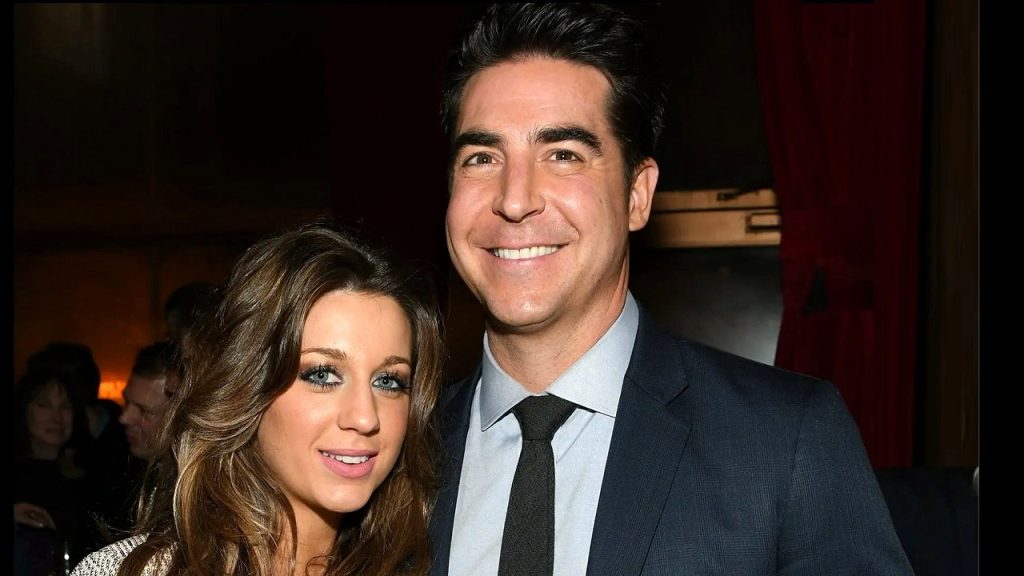Elon Musk Twitter: A New Era in Social Media
When billionaire entrepreneur Elon Musk took over Twitter, it shocked the tech industry and beyond. Musk, already known as the CEO of Tesla and SpaceX, among other ventures, added Twitter to his list of ambitious projects in October 2022. The acquisition didn’t just mean a change in Twitter’s ownership; it signaled a potential shift in how social media platforms might function, operate, and impact society. In this article, we’ll explore Elon Musk’s journey with Twitter, his implemented changes, his vision for the platform, and the potential implications for social media users worldwide.
Who Is Elon Musk?
Most people recognize Elon Musk. Known for his work in electric vehicles with Tesla, his groundbreaking efforts in space exploration with SpaceX, and his innovative brain-computer interface company, Neuralink, Musk is a visionary in the tech industry. His influence reaches far and wide, and he’s become one of the most polarizing figures in business and technology.
However, Elon Musk’s purchase of Twitter significantly shifts his career and focus. Unlike his other companies, Twitter is not a hardware-based or infrastructure-focused business. It’s a social media platform where people communicate, share ideas, and shape public opinion. This acquisition represents a new challenge for Musk, whose vision for “free speech” and an open digital space has inspired both support and controversy.
Why Did Elon Musk Buy Twitter?
Elon Musk’s reasons for buying Twitter were complex, but he was vocal about one main goal: promoting free speech. Musk believes that Twitter is responsible for allowing diverse viewpoints and should be an open platform where people can communicate without censorship.
According to Musk, Twitter needed a change in direction to ensure that it indeed she public. In his view, social media platforms had become restrictive, often limiting what people could say or share. By purchasing Twitter, Musk aimed to build a platform where transparency and open conversation would be prioritized.
Key Motivations Behind the Acquisition
Here are some of Musk’s motivations for buying Twitter:
- Free Speech: Musk is a strong advocate for free speech. He wants Twitter to become a space where people can express their opinions without fear of censorship.
- Combating Bots: Twitter has long struggled with bots and fake accounts, which Musk sees as damaging to the platform. He aims to reduce their influence.
- Encouraging Innovation: Musk believes Twitter should embrace new ideas and features, creating a more dynamic and engaging platform for users.
- Potential for Profitability: Despite his focus on free speech, Musk is also a businessman. He saw potential for improving Twitter’s profitability through structure, features, and monetization changes.
The Initial Reactions to Elon Musk’s Twitter Takeover
When Musk officially acquired Twitter, reactions were mixed. Some people were thrilled, believing that Musk’s takeover would make Twitter a better place for open discussions. Others were skeptical and worried that Musk’s vision for the platform might lead to less content moderation and increased spread of misinformation.
Many Twitter users feared that Musk’s “free speech” approach might encourage more harassment, hate speech, or dangerous misinformation. On the other hand, some groups welcomed Musk’s hands-off approach, hoping it would restore Twitter as a free and open forum.
Supporters and Critics
- Supporters saw Musk’s acquisition as a way to bring transparency and fairness to Twitter and allow users to speak their minds without restrictions.
- Critics worried that a lack of moderation could lead to harmful content spreading unchecked, making Twitter a less safe place for marginalized groups and vulnerable users.
Major Changes Musk Has Made on Twitter
Since taking control of Twitter, Elon Musk has implemented several notable changes. His rapid decision-making and willingness to experiment with new features have redefined Twitter’s operation. Below are some of the significant changes he introduced:
1. Paid Verification System (Twitter Blue)
One of Musk’s earliest moves was to revamp Twitter’s verification system. Traditionally, blue verification badges were reserved for public figures, journalists, celebrities, and other notable individuals. Musk changed that by creating a new paid verification program called Twitter Blue.
Under this system:
- Anyone paying a monthly fee could get the blue checkmark, signifying a verified account.
- The idea was to make verification accessible to everyone rather than keeping it exclusive.
- This change led to debates over the value and purpose of verification, with some saying it has diluted the credibility of the blue badge.
2. Relaxed Content Moderation Policies
Musk has repeatedly stated that he wants Twitter to be a platform for free speech. This has led to a relaxation in content moderation policies. While Twitter still has rules against illegal content, Musk has reduced the enforcement of policies on controversial or divisive posts, hoping this will foster open conversation.
However, this change has been controversial. Critics argue it might enable the spread of harmful content, while supporters claim it allows for a healthier exchange of ideas.
3. Crackdown on Bots and Fake Accounts
Fake accounts and bots have plagued Twitter for years, often spreading misinformation or boosting engagement artificially. Musk has been vocal about reducing the number of bots on Twitter. His team has taken steps to identify and remove fake accounts, aiming to improve the quality of interactions on the platform.
4. Employee Layoffs and Restructuring
One of the most dramatic changes Musk made was restructuring Twitter’s workforce. Shortly after taking control, he laid off a significant portion of the staff, from engineers to content moderators. While this move aimed to streamline the company and cut costs, it raised concerns about Twitter’s ability to function efficiently and maintain a safe environment.
5. Open Sourcing Twitter’s Algorithm
Musk has often spoken about making Twitter’s algorithm open-source, meaning the code that determines what users see would be available for public review. This is part of his mission to increase transparency on the platform, allowing users to understand how content is prioritized and potentially reducing bias.
Elon Musk’s Vision for Twitter’s Future
Elon Musk has big plans for Twitter. He’s not just looking to maintain the platform as it is; he wants to transform it into something entirely new. Musk has hinted at developing Twitter into what he calls “X, the everything app.” His vision includes integrating features beyond just social media, such as:
- Payment Systems: Musk has suggested that Twitter could eventually offer payment processing, allowing users to send and receive Money within the app.
- Expanded Communication Tools: This includes the possibility of voice and video calls, making Twitter a more versatile communication tool.
- News Aggregation: Musk envisions Twitter as a central hub for real-time news, where users can instantly get updates on world events.
- Entertainment and Content Creation: Twitter could host exclusive content and live broadcasts, attracting creators and influencers to the platform.
What Is “X, the Everything App”?
“X, the everything app” is Musk’s concept of a multi-functional platform where people can communicate, shop, pay bills, and more. Inspired by the success of super-apps like WeChat in China, Musk aims to make Twitter a one-stop digital hub for various services.
Table: Major Changes Elon Musk Brought to Twitter
| Change | Description | Impact |
|---|---|---|
| Paid Verification (Twitter Blue) | Allows users to purchase blue checkmarks through subscription | Increased revenue but led to debates on verification value |
| Relaxed Content Moderation | Reduced enforcement of content rules, supporting free speech | Allows users to purchase blue checkmarks through a subscription |
| Bot and Fake Account Removal | Active efforts to reduce bots and fake accounts | Improved engagement quality, but difficult to implement |
| Employee Layoffs | Large-scale layoffs to cut costs and restructure | Raised concerns over platform stability and safety |
| Algorithm Transparency | Mixed reactions, some fear an increase in harmful content | Increase in user trust, but also raised technical challenges |
| Future Vision for “X” App | Plans to open-source Twitter’s algorithm for transparency | Ambitious, could redefine social media if successful |
How These Changes Impact Twitter Users
Musk’s changes to Twitter affect users in different ways. While some enjoy the increased freedom, others have concerns about the platform’s future. Here’s a breakdown of how various types of users are impacted:
- Everyday Users: With changes in moderation policies and a new paid verification system, regular users experience a Twitter that’s less restricted but more unpredictable. Some may find the relaxed environment refreshing, while others may be concerned about misinformation or harassment.
- Public Figures and Influencers: The paid verification model changes how influencers and public figures approach their Twitter presence. Some worry that the blue badge no longer signifies credibility, while others appreciate the accessible verification option.
- Businesses and Advertisers: Musk’s changes have made some advertisers cautious. With relaxed, relaxed content moderation policies, some brands fear that their ads may appear alongside controversial content.
- Developers and Innovators: Musk’s plans to open-source Twitter’s algorithm could attract developers who want to contribute to the platform’s growth. However, this approach is experimental, and the outcome is uncertain.
Challenges Facing Musk’s Twitter
While Elon Musk has grand ambitions for Twitter, he also faces several challenges. Twitter operates in a complex ecosystem where user experience, advertiser satisfaction, and regulatory compliance must be balanced.
Financial Challenges
Musk purchased Twitter for $44 billion, which surprised many analysts. Twitter now has significant debt, and Musk needs to find ways to generate revenue. Twitter Blue is one such effort, but the platform may need additional revenue streams to sustain itself.
Public Perception and Reputation
Musk’s outspoken nature and rapid decision-making have impacted Twitter’s reputation. While some see him as a champion for free
speech, others view his leadership style as unpredictable and potentially risky for a social media platform.
Regulatory Concerns
Social media platforms are under increasing scrutiny from regulators. Musk’s hands-off approach to moderation might put Twitter at odds with laws and regulations in various countries. This could create legal challenges if Twitter is found to be violating content standards in certain regions.
The Future of Elon Musk’s Twitter
As Elon Musk continues to reshape Twitter, the platform could become a pioneering force in social media or face significant setbacks. His vision for “X, the everything app” is ambitious, and if successful, it could change how we interact with technology daily. However, many challenges remain, and Musk’s vision will require carefully balancing freedom, safety, and profitability.
Under Musk’s leadership, Twitter is a social experiment. The public, media, and tech industry are watching closely. Only time will tell if Elon Musk’s Twitter will succeed in his mission to create a platform that promotes free speech and innovation while being financially sustainable.
Final Thoughts on Elon Musk’s Twitter
Elon Musk’s journey with Twitter has been nothing short of transformative. By introducing changes like paid verification, relaxed moderation policies, and plans for an “everything app,” Musk is challenging traditional views on social media. Whether you support or criticize these changes, it’s clear that Elon Musk is not afraid to take risks and push boundaries. His approach to Twitter might just set the stage for a new era in social media.
As we watch Elon Musk’s Twitter evolve, one thing is sure: Twitter is no longer just a social media platform; it’s a stage for experimentation, innovation, and, potentially, disruption in the tech industry.



